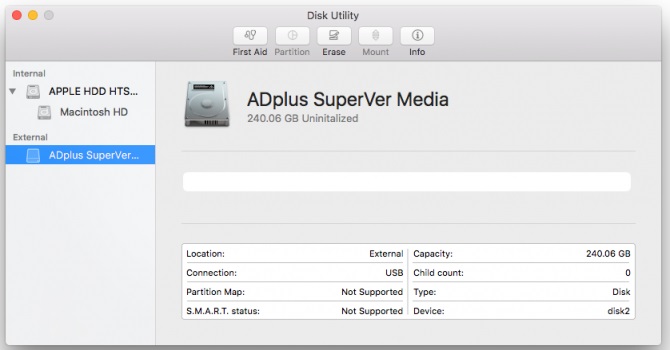- The overwhelming majority of USB flash drives you buy are going to come in one of two formats: FAT32 or NTFS. The first format, FAT32, is fully compatible with Mac OS X, though with some drawbacks.
- Format a USB on Mac for Use Only on Mac Computers Connect the USB to your Mac, and open Applications Utilities Disk Utility. Select the USB memory drive you want to format. Then, click on the Delete tab and select the Mac OS Plus (with registration’s) or Mac OS Plus (uppercase / lowercase with registration) and click on the Delete button.
Hi there mlr99,
To format a flash drive on a Mac, plug in the drive and open the 'Applications' folder, the 'Utilities' folder and then 'Disk Utility.' Your flash drive should be listed in the left menu. Right click your flash drive to open up a list of options including 'Erase'. Click 'Erase' to open a small window with a few options. From this menu you'll be able to select the file system you would like your flash drive to use after it's been formatted.
From what you describe it sounds like you are trying to install Lion on your newly installed HDD replacement but its not showing as a disk when you try to actually install Mac OS X. That indicates to me that the drive has not yet been formatted as Mac OS Extended Journaled, so it is not ready for Lion to install onto it. This section of the following article will help you get that drive erased and formatted properly so you can continue with the installation:

- Before you begin, make sure your Mac is connected to the Internet.
- Restart your Mac. Immediately hold down the Command (⌘) and R keys after you hear the startup sound to start up in OS X Recovery.
- When the Recovery window appears, select Disk Utility then click Continue.
- Select the indented volume name of your startup disk from the left side of the Disk Utility window, then click the Erase tab.
- If you want to securely erase the drive, click Security Options. Select an erase method, then click OK.
- From the Format pop-up menu, select Mac OS Extended (Journaled). Type a name for your disk, then click Erase.
- After the drive is erased, close the Disk Utility window.
- If you’re not connected to the Internet, choose a network from the Wi-Fi menu.
- Select the option to Reinstall OS X.
- Click Continue and follow the onscreen instructions to reinstall OS X.
Thank you for using Apple Support Communities.
Format An External Hard Drive Or Usb Flash Drive For Mac Os X
Oct 1, 2015 7:32 AM
